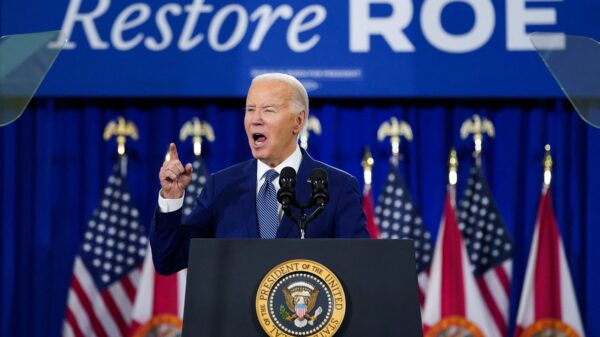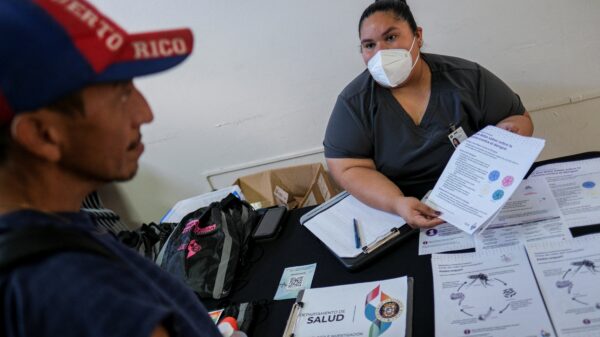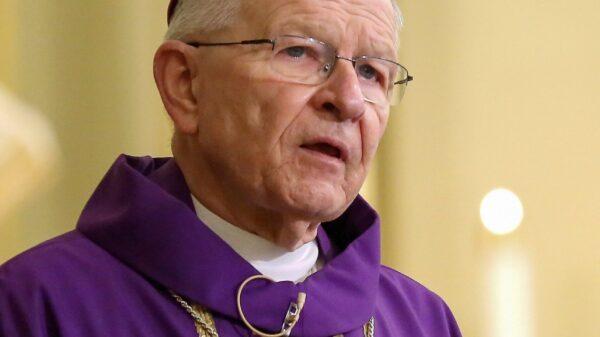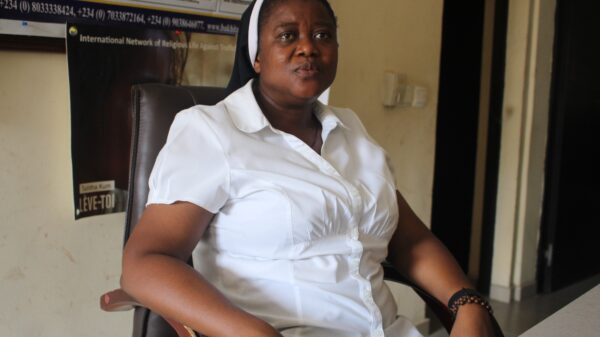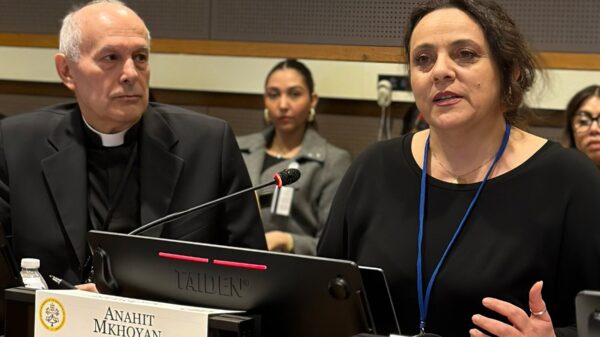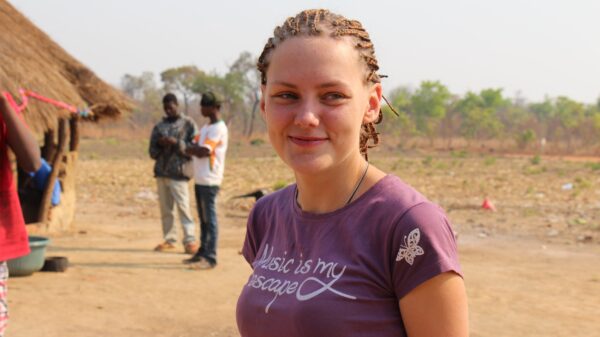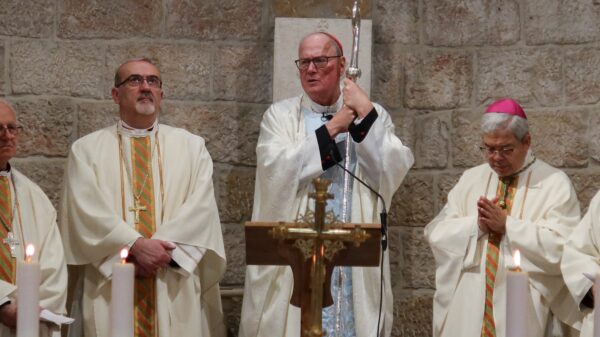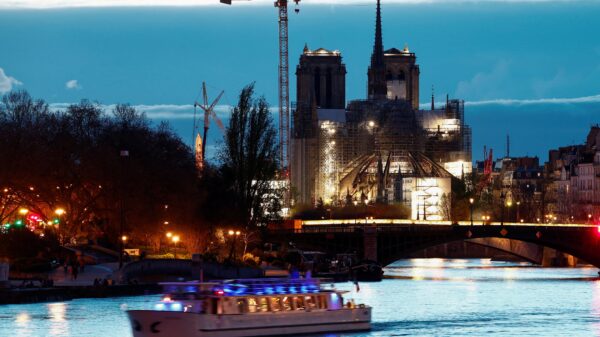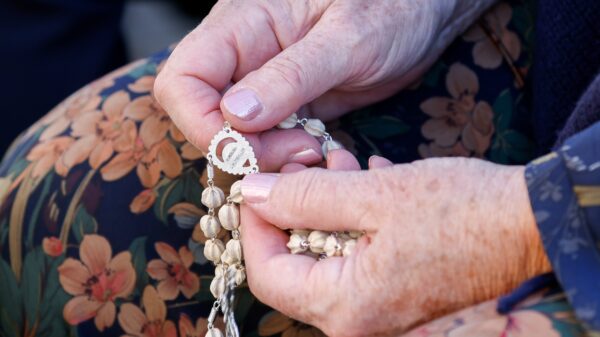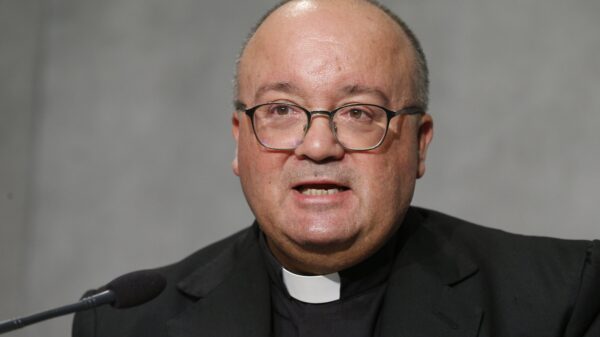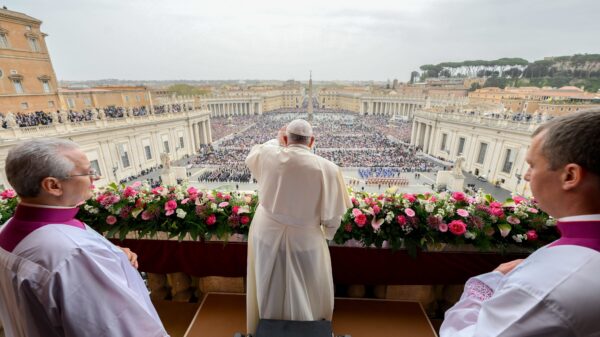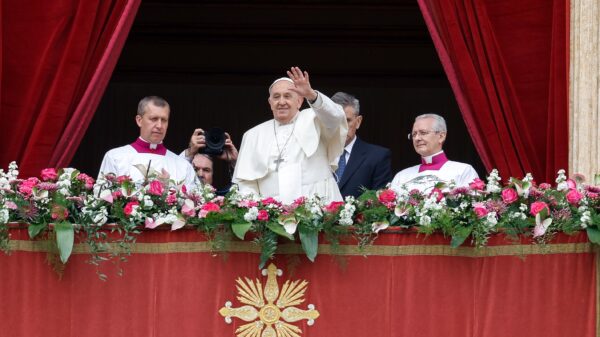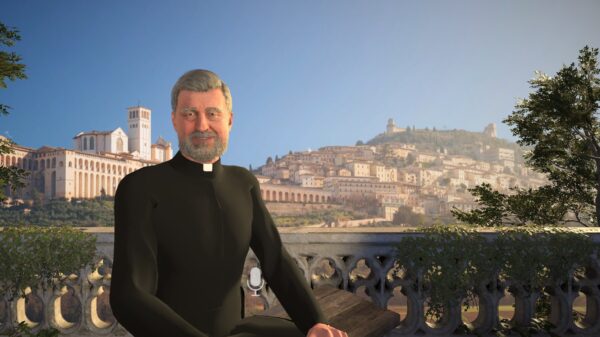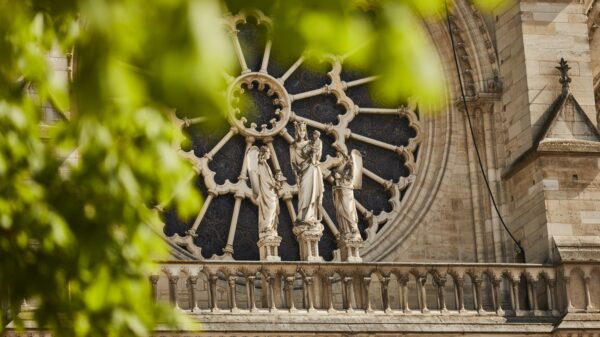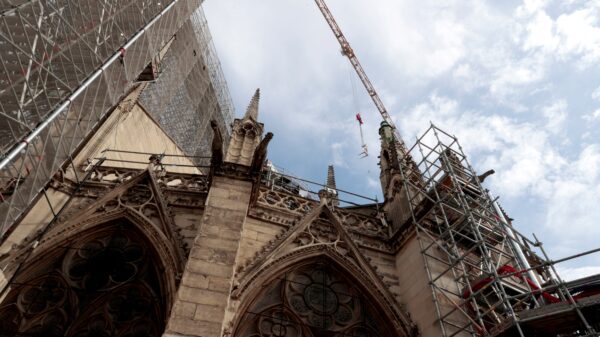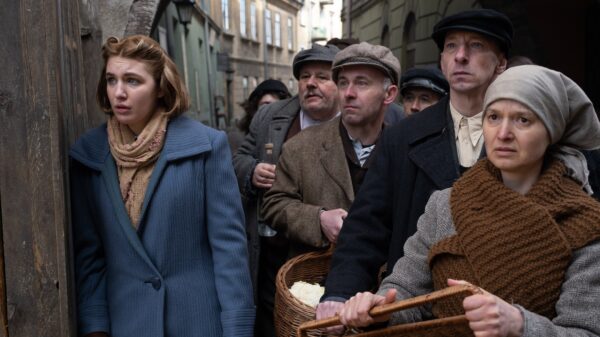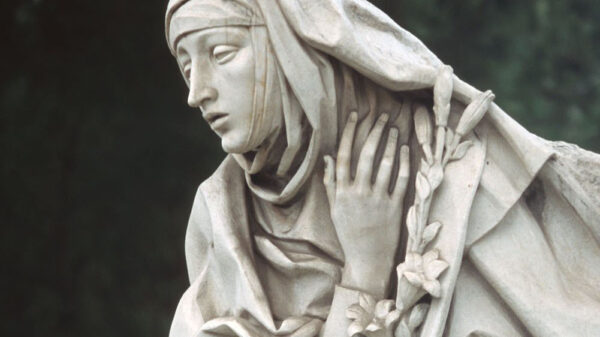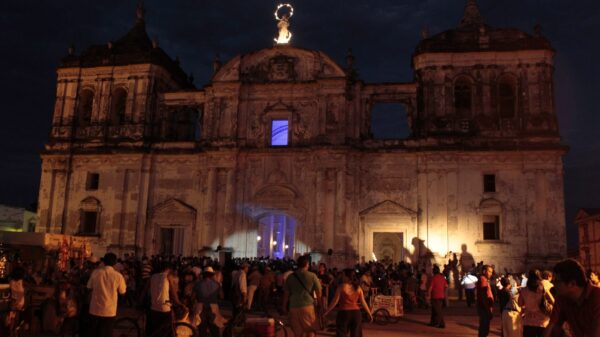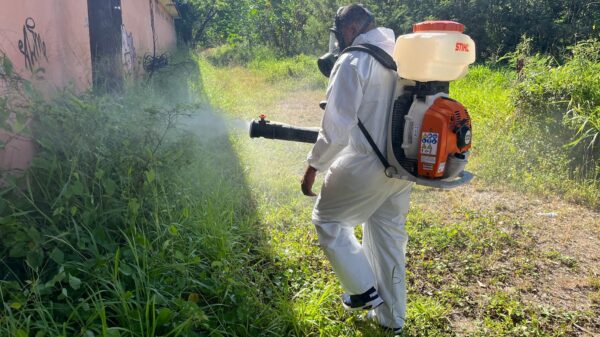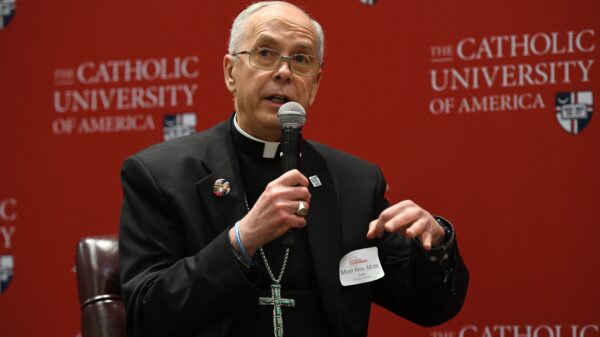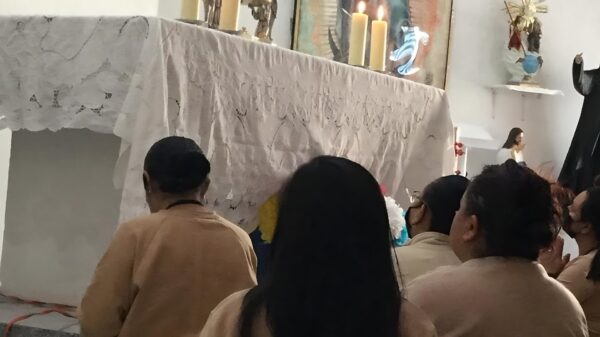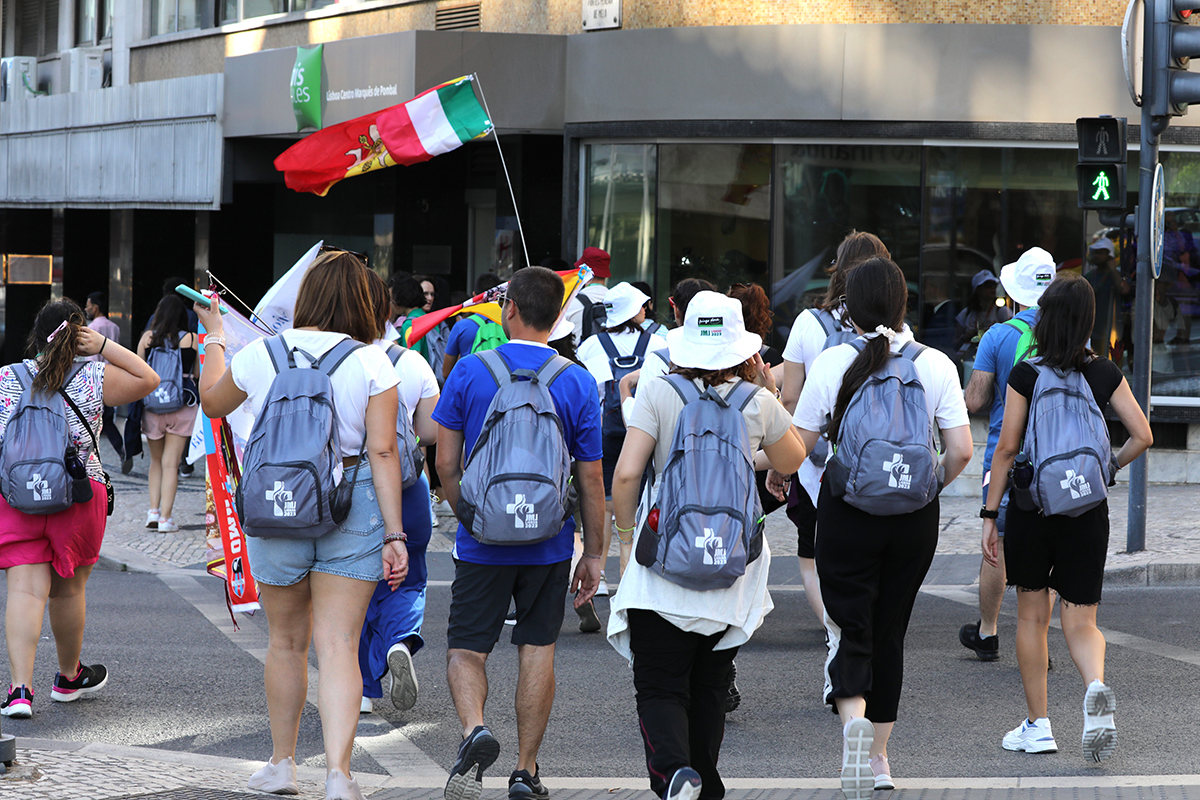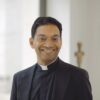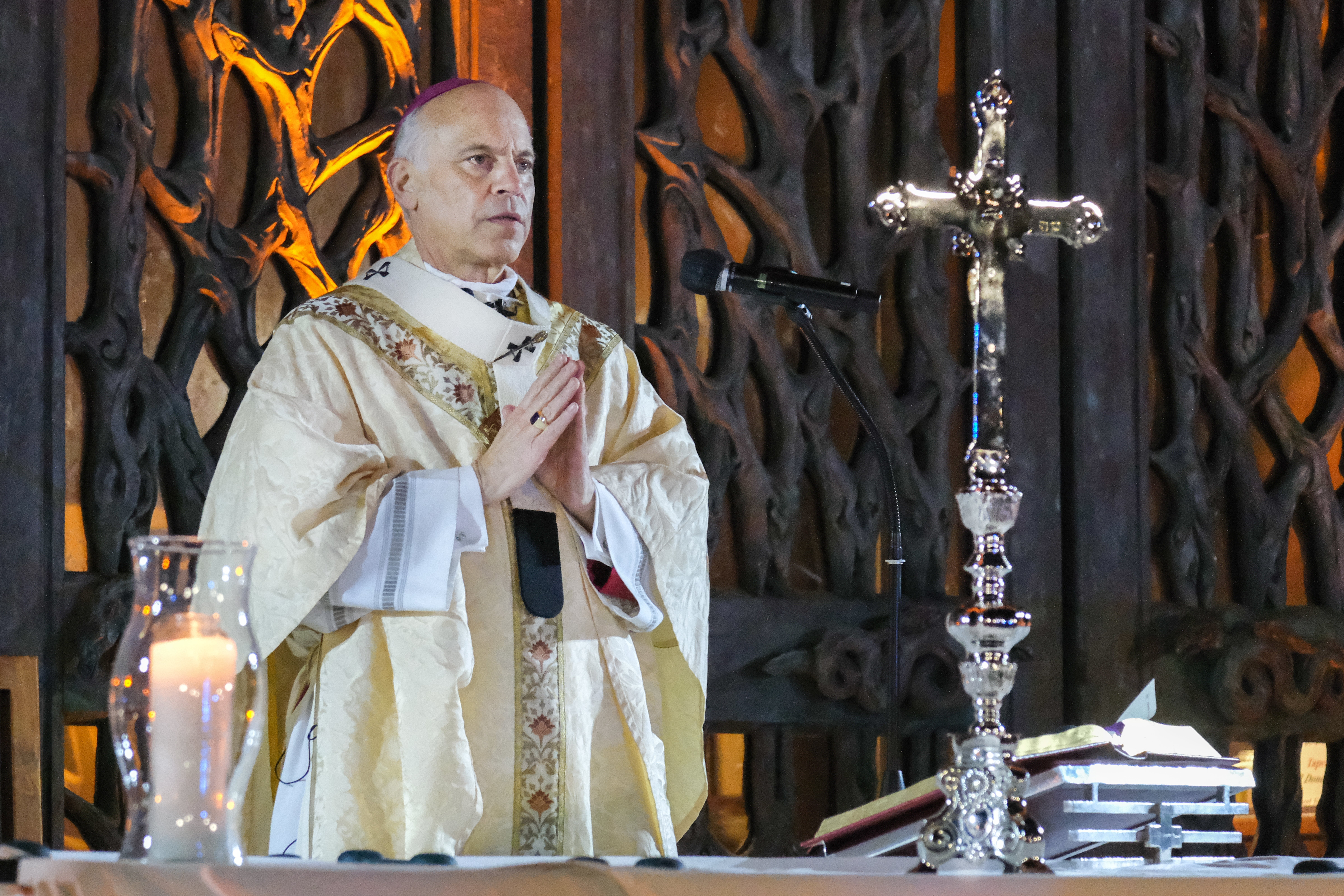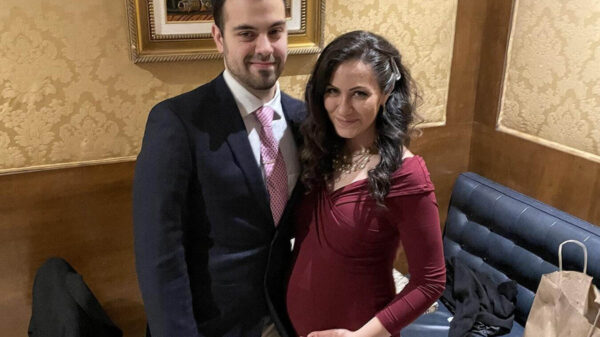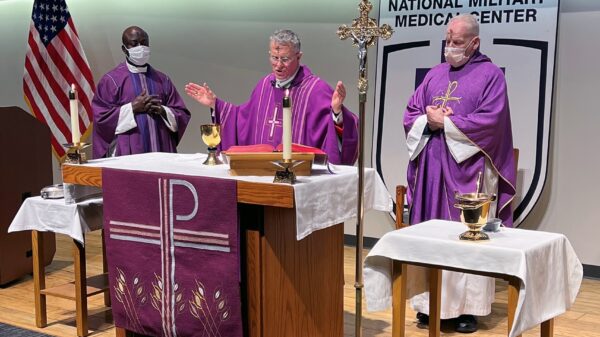(OSV News) — With 80% of people identifying as Catholic, Portugal is among the countries with the highest church presence in Europe. The signs of the nation’s intimate relationship with Catholicism are visible all across Lisbon, where thousands of youth have already arrived for World Youth Day. Pope Francis is joining them Aug. 2-6.
It will be the pope’s second time in Portugal, something that is not common in his papacy when it comes to European nations, Father Peter Stilwell, who heads the Patriarchate of Lisbon’s department of ecumenism and interfaith dialogue, pointed out.
“The Portuguese generally have a close identification with popes. With Francis, there is a relationship of affection. People seem to know him better than their own bishop,” he told OSV News.
In 2017, during his first visit, Francis canonized the siblings Francisco and Jacinta Marto, two of the three little shepherds who witnessed several apparitions of the Blessed Virgin Mary in Fátima in 1917. The third of them, Sister Lucia dos Santos, has recently been declared “venerable” by the pontiff.
This time, the pope will also visit the Fátima sanctuary, where he will pray the rosary along with a group of sick young Catholics on Aug. 5. That is not a secondary element in his journey in Portugal.
“I consider that most [Portuguese] Catholics — maybe 80% of them — declare to be Catholic due to a psychological or sentimental connection to Fátima. If it was not for Fátima, many would be professing other faiths today,” Father Stilwell said.
Among the Portuguese, the habit of praying the rosary is deeply linked to the Fátima devotion.
At the sanctuary, built at the location where the apparitions happened, another important event is a procession that happens every year. Devotees gather every May 12 at night — Mary first appeared on May 13 — for a candlelight march.
Processions are a traditional aspect of popular Catholicism in Portugal, especially in the small cities and in the countryside, where the Marian devotion is stronger.
In Lisbon, where most of the events with the pope will happen, there is a visible coexistence of Portugal’s ancient Catholic roots and the most recent social transformations that have been influencing church life.
The Cathedral of St. Mary Major, known as the Lisbon Cathedral, is a romanesque temple built as soon as the Christians regained control of the city from the Moors, the Muslim rulers who dominated the region since the eighth century.
Over the centuries, the church suffered several interventions and became a combination of different architectural styles. Among its many chapels, dedicated to a number of saints, there is one in honor of Our Lady of the Immaculate Conception — Portugal’s patron saint — and another in honor of St. Anthony of Padua, the capital’s patron saint.
St. Anthony, a Franciscan friar who lived between 1195-1231 and died in Italy (and where his name, worshiped for centuries, comes from), is a beloved saint in Portugal and Brazil. The church of St. Anthony of Lisbon was built at the place where he presumably was born, almost in front of the cathedral.
On Aug. 2, Pope Francis will meet with bishops and priests at the Jerónimos Monastery, built in the early 1500s and owned by the extinct Order of St. Jerome till its secularization in 1833. One of the most important architectural complexes in Portugal, the monastery is a landmark in the history of the great expeditions that led the Portuguese to form their great colonial empire, which once included nations like Brazil, Angola and parts of India.
World Youth Day participants will be able to visit several other historical religious buildings in Lisbon and nearby cities in their free time. But the pope also included in his visit a place special to his pastoral agenda — the parish center of St. Vincent de Paul located within the poor outskirts of the city.
The center offers several social services, including a kindergarten and a home for elderly people, and serves 1,200 hot meals every day. The neighborhood where it is located, Serafina, is populated by workers and immigrants, who many times share small houses with dozens of relatives.
Pope Francis will meet with members of two other relief organizations at the Serafina center on Aug. 4.
That visit may incentivize the Portuguese church to respond to the pontiff’s message of an “outgoing” church, one that pays attention to the poor and their problems. That is something that has been insufficient in the opinion of Sofia Távora, a young Catholic lawyer from Lisbon.
“The church in Portugal ceased to discuss poverty and its causes in a time when the world is more and more impoverished,” she told OSV News.
Távora is part of the Capela do Rato community, a group of Catholics who gather at the church of Our Lady of the Conception, popularly known as Capela do Rato, and has been historically active in debating social issues and in the work with the poor.
In 1972, during the Estado Novo — the regime brought to power by right-wing dictator António Salazar in 1933 — a group of activists launched a vigil at the Capela do Rato against the government and the colonial wars waged by Portugal in its African colonies. The police got into the temple and detained 50 activists, spurring outrage in the Portuguese society.
The Salazarist dictatorship ended with the Carnation Revolution in 1974, but some Catholics feel that the church still has aspects of that era.
“There has been an intimate relationship between the church hierarchy and the authoritarian regime for half a century. A culture of authoritarianism can be noticed in the clergy, which still resists any attempt of a more effective lay participation,” José Manuel Pureza, a Catholic professor at the University of Coimbra.
Several groups have been questioning the church from the inside, Pureza added, with the goal of combating clericalism and improving internal democracy.
One of the most notorious actions of that kind has been a petition signed by 270 Catholics demanding a serious investigation of cases of sexual abuse that occurred in the ecclesial sphere.
The movement has been fundamental, according to analysts, in the decision of the episcopate to create a commission investigating the issue. The Independent Commission for the Study of Sexual Abuse of Children in the Catholic Church in Portugal, which was installed in 2022 and had autonomy to consult church archives and interview victims, concluded earlier this year that around 4,800 people suffered clerical abuse in Portugal.
Groups of lay Catholics consider that most bishops failed to accept the committee’s report with an open heart. Sofia Távora, who was one of the signatories of the petition, is one of them.
“I was deeply impressed by the coldness with which some bishops dealt with the problem. It was a reaction of protectionism, as if it was necessary to preserve the church’s appearance,” she recalled.
António Boita Paulino, a retired engineer and a member of the group Metanoia, which gathers Catholic professionals, also thinks that the church’s response to the whole inquiry was “weak,” something that reflects a stiff clericalism.
“Lay people have been taking part in the synodal process, but deep inside we are waiting for a more decisive action from the clergy that just will not happen,” he told OSV News.
Paulino hopes that Francis’ papacy will lead to more and more renovations in the way lay people and women can experience church life.
“We hope that he will live for several years and be able to implement the necessary change,” he said.
For Távora, “Francis captivates the people for his simpleness and for his social and human commitment.”
Father Stilwell said that the church has decided to “close itself in the parish work with laypeople decades ago,” something that made it lose social relevance. Pope Francis, in his opinion, has been stimulating the church to rebuild the necessary bridges and listen to lay Catholics.
He hopes that WYD can be a changing moment in Portugal, given that the preparation for the event, over the past years, has involved many young people.
David de Dias Moura, a 31-year-old lawyer, said that since last year many young Catholics have joined his youth pastoral group in Vila Real, in the northern part of the country, excited about WYD.
“Many people from cities like Vila Real conclude high school and move to the (large) coastal cities to study. They end up building their lives far from the church,” he said.
The church needs to offer possibilities to those young people to continue their involvement in Catholic life, he added.
“Our hope is that the young Catholics who joined us now will continue in the church after WYD. The church has to keep open doors, so the people will always feel it is their house,” he said.
Eduardo Campos Lima writes for OSV News from São Paulo, Brazil.


